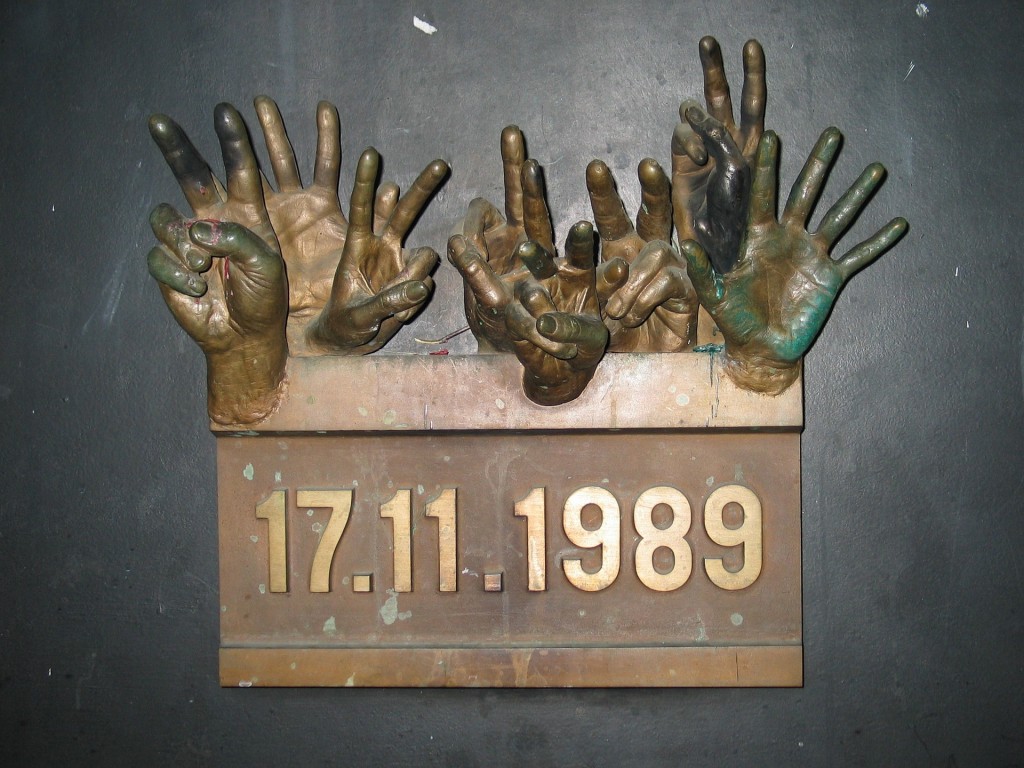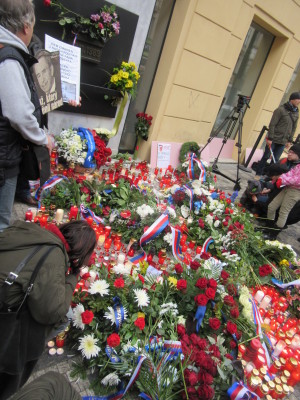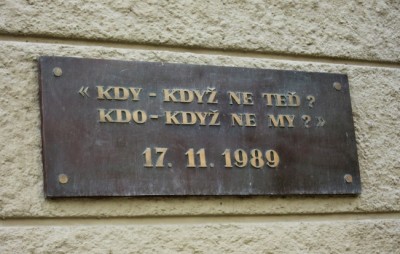30 years ago the Velvet Revolution began with a demonstration in Prague. It started all of a sudden. Then, it all happened very quickly. The communist regime, which had remained in power by force since 1948, had become hollow and rotten in Czechoslovakia. All that was needed was a strong signal to help democracy win.
On November 17, 1989, students gathered for a demonstration in front of a university building on Albertov Street, near the old Botanical Garden. The date was well chosen, because first of all the regime could not object to a manifestation against the crimes of National Socialism – overlooking the fact that the demonstrators wanted to draw a parallel between the two great totalitarian tyrannies the country had gone through.
Officially, the demonstration was intended to commemorate the murder of students by the Nazi occupiers and the subsequent courageous student protests in 1939, exactly 50 years earlier. Now, in reality, it was against the ruling Communists who had oppressed the country since 1948. Thousands and thousands of people joined the march, which slowly approached the inner city.
Only ten days later, the old regime was swept away by what would later be called the Velvet Revolution. Since then, November 17 has been an official state holiday as the “Day of the Struggle for Freedom and Democracy” (Den boje za svobodu a demokracii).
Brittle Regime
The regime was already brittle, but now it needed a push to end it. The gerontocratic communist leadership under the sick and aged Gustáv Husák had long since known that its end was near, even though it did not really want to admit it.
Their system was never democratically legitimized, but was based exclusively on the hegemony of the Soviet Union and the Warsaw Pact, which – as in the suppression of the Prague Spring and its associated liberalization-oriented reform policy in 1968 – maintained it by force. This certainty now began to crumble.
The Soviet Union – now ruled by reform-oriented Mikhail Gorbachev – did not intervene when Hungary opened its section of the Iron Curtain on 2 May 1989, allowing thousands of refugees from the “GDR” to leave.
On September 30, the citizens of Prague were able to see for themselves the power of the newly awakening freedom in the Eastern bloc. Thousands of people seeking help had rescued themselves on the grounds of the German Embassy.
After tough negotiations with the leadership of the “GDR”, the liberal Foreign Minister Hans-Dietrich Genscher was able to announce to the refugees in the embassy in his balcony speech that they would leave for freedom in the Federal Republic – a new blow for the regime, which was increasingly struggling on a losing battle.
Victory of Freedom
Back in 1989, the students moved to Národní třída (National Avenue), very close to the National Theater, where the actors joined the thousands of protesters. At the height of the Schirding Palace, where the commemorative plaque for the demonstrators was sunk into a sea of flowers again for the 30th anniversary, clashes broke out with the police, who tried to stop the advance by force.
It did so after some 600 protesters were injured, some of them seriously. However, the police could no longer stop the movement behind it. Just two days later, 200,000 protesters gathered on Wenceslas Square. The end of the tyranny was in sight.
It was perhaps no coincidence that many people working in the field of culture joined in at the latest on the march past the National Theater. For they were particularly strongly represented in the dissident scene, especially in the civil rights movement Charta 77, whose undisputed leading figure was the writer Václav Havel, who – despite all the repression – put the issue of civil liberties on the political agenda for years.
Five days after the demonstration, Havel appeared together with Alexander Dubček, the hero of the Prague Spring, in front of thousands of people on Wenceslas Square and called on the communists to abdicate. The sheer size of the demonstration, with around 800,000 participants in Prague alone, made the rulers see the inevitable.
As early as November 26, round table negotiations began that led to the first non-Communist-dominated government since 1948. The path to the first free elections, which then took place in June 1990, was paved.
The Fence is Demolished
On 23 December 1989, the new liberal Foreign Minister of the Czechoslovak Republic, Jiří Dienstbier, and his German colleague Hans-Dietrich Genscher were able to symbolically cut the border fence together. Here, too, the Iron Curtain disappeared almost overnight.
And at the place where the Velvet Revolution began on 17 November 1989, there is now a small commemorative plaque. It is placed on the outer wall of the Museum of Natural History at the corner of Albertov and Studničkova. The Czech text in German translation reads: “When – if not now? Who – if not us?” – a reminder to use the opportunities for freedom when they arise.
The article was originally published at: https://fnf-europe.org/2019/11/17/when-if-not-now-who-if-not-us/





